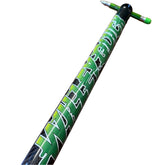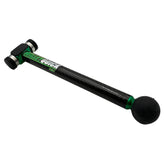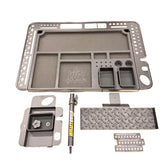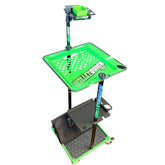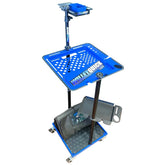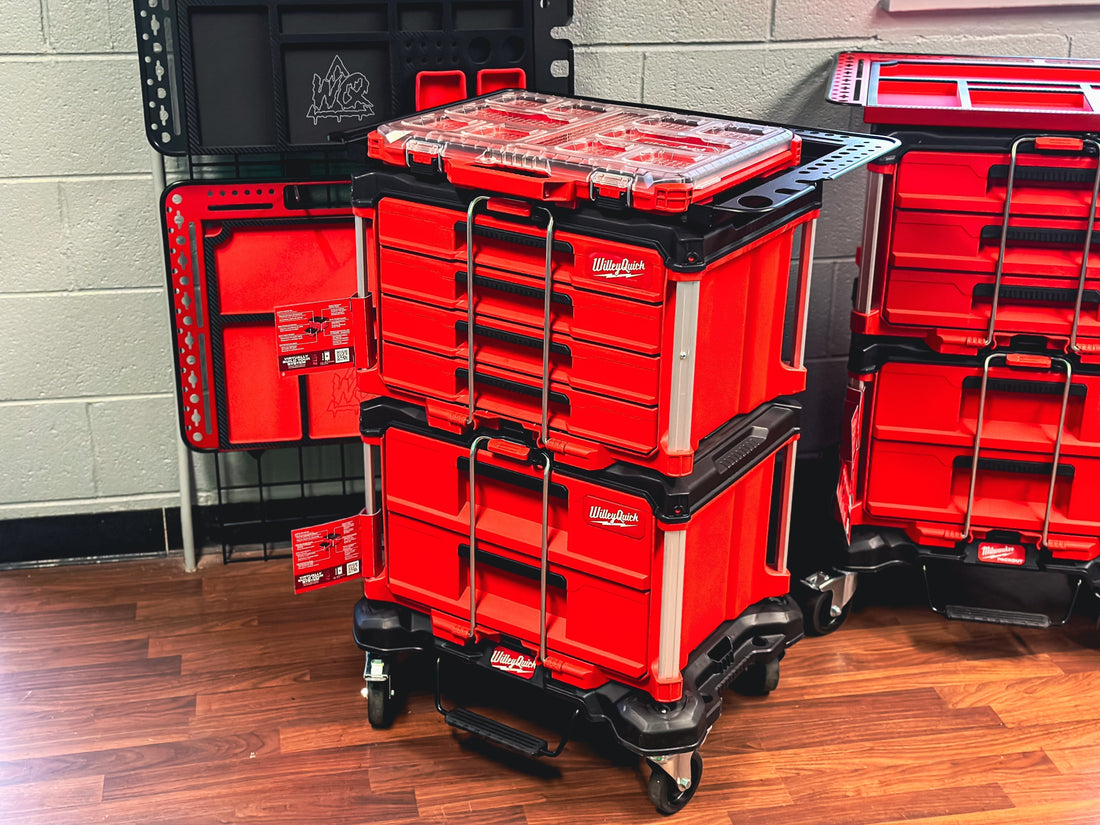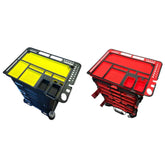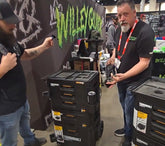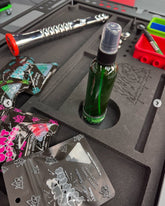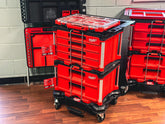Rolling Tool Carts, What to Pick First, The Tool Cart System or the PDR Cart Top?
When a paintless dent repair (PDR) technician invests in their setup, one of the most important decisions is how to organize tools on the job. Unlike general auto body shops, PDR work demands mobility, efficiency, and quick access to a specialized range of tools, rods, knockdowns, glue pull kits, tabs, lights, and accessories.
That’s why rolling tool carts have become essential. They bring your workflow to you, whether you’re in a dealership lot, a customer’s garage, or inside a busy shop.
But here’s the big question:
When building out your rolling cart setup, what should you pick first—the cart system itself or the PDR cart top that sits on it?
Read the Toolbox Shootout: Milwaukee Packout Versus the ToughBuilt Stacktech

Why Rolling Tool Carts Matter in PDR
PDR is built on speed, precision, and flexibility. Technicians rarely stay at a fixed workstation. Instead, they move constantly between vehicles and dent locations. A rolling cart solves three major problems:
-
Organization – keeping glue, rods, hammers, tabs, lights, and accessories in one mobile station.
-
Efficiency – cutting wasted time walking back to toolboxes or benches.
-
Professionalism – presenting a clean, systematic setup that inspires customer confidence.
Modern carts are no longer just “shelves on wheels.” They’re modular, expandable, and purpose-built for serious PDR technicians.
The Best Tool Cart Tops for PDR Repair
The Two Key Parts of a PDR Cart
When you’re building out your setup, you need to consider:
-
The Rolling Cart System (Base): The foundation. Think Milwaukee Packout, DeWalt ToughSystem, ToughBuilt StackTech or other modular platforms with drawers, wheels, and rugged durability.
-
The PDR Cart Top: A specialized add-on designed for PDR. It sits on the cart base and provides cutouts, organizers, and rod holders tailored to a technician’s daily workflow.
Both matter—but which comes first?

Option 1: Start With the Rolling Cart System
Some technicians start with the cart system itself.
✅ Pros:
-
Future Proofing – lock into a modular system you can expand over time.
-
Mobility First – use it for storage and transport even before adding a PDR top.
-
Durability – built to handle shop floors, parking lots, and travel.
❌ Cons:
-
Generic Storage – without a PDR top, tools can sit loosely in drawers.
-
Redundancy Risk – if your future PDR top isn’t compatible, you may need to switch systems.
Best For: Techs who want a general tool system that can grow with both PDR and other automotive gear.
Option 2: Start With the PDR Cart Top
Other technicians go straight for the PDR-specific cart top.
✅ Pros:
-
Workflow Optimization – instant organization with cutouts for tabs, rods, and knockdowns.
-
Specialization – designed 100% for PDR.
-
Professional Presentation – immediately elevates your setup.
❌ Cons:
-
System Dependence – tops are usually designed for one platform (e.g., Milwaukee Packout).
-
Upfront Cost – you may need to buy both the top and system together.
-
Limited Use Alone – a top without a rolling base is just a tabletop.
Best For: Techs who want an immediate performance upgrade and know which brand/system they want long-term.
Check out our YouTube channel where we compare our WQ1 versus WQ2 cart tops.
Which Should You Pick First?
Here’s a simple framework:
-
Choose the rolling cart system first if mobility and expansion are your priorities.
-
Choose the PDR cart top first if workflow efficiency and immediate tool organization matter most.
-
Choose both at once if budget allows—you’ll avoid compatibility issues and enjoy the full benefits right away.
How They Work Together
A fully built cart combines both pieces:
-
Bottom drawers/bins – glue guns, power packs, lights.
-
Middle organizers – tabs, accessories, small tools.
-
PDR cart top – knockdowns, rods, hammers in easy reach.
This creates a tiered workflow: heavy gear below, small tools in the middle, essentials on top.

Buying Tips for Technicians
-
Check compatibility – confirm the cart top matches your chosen base system.
-
Plan ahead – think about how many drawers or bins you’ll need six months from now.
-
Consider mobility – if you work hail jobs, portability may matter more than size.
-
Balance cost with efficiency – a full setup pays for itself in saved time.
-
See other setups – at trade shows or in tech groups, you’ll find inspiration.
Read This Before you buy. 4 problems with the Milwaukee Packout Tool Boxes for PDR
Conclusion
Rolling tool carts are more than storage—they’re the heartbeat of a PDR workflow.
-
Start with the system base if you want durability and expansion.
-
Start with the PDR top if you want immediate efficiency.
-
Or invest in both together for the complete solution.
Either way, your rolling cart will become the foundation of your daily repairs and a symbol of professionalism in the PDR industry.
🚀 Ready to Build Your PDR Cart?
At Willey Quick Tools, we supply precision-engineered PDR cart tops that fit perfectly with the Milwaukee Packout system. and the ToughBuilt StackTech. Whether you’re just starting out or expanding your mobile setup, we’ll help you create a rolling workstation that works as hard as you do.

